
Without Borders - insights from the March lecture of the Circle
Publisher
Petr Šmídek
12.03.2010 14:00
Petr Šmídek
12.03.2010 14:00
Radek Brunecký
Czech Republic
Prague
Pavel Nasadil
Irena Hrabincová
Marek Přikryl
The first lecture of the Circle this year offered space to as many as nine young architects who gained their professional experience abroad. Most of them set out beyond the borders to work with renowned creators while still studying at Czech architectural schools, and the main magnet for them was the London scene.
An exception was the Brno graduate Radek Brunecký, who, before obtaining his diploma under Zdeněk Franěk, spent time at two Dutch offices, SeARCH and NIO architecten, and then moved to conservative Switzerland after graduation, where he still experiences a completely different approach to design at e2a architekten and Berrel Berrel Kräutler. Both nations are connected by good cheese and quality architecture, but geographically and mentally, there are perhaps no more different countries in Europe. Radek Brunecký, who could experience the atmosphere in both of these different countries for several years, managed to depict their essence in a witty and brief presentation and was the only one that evening to answer all the questions posed by the Circle. Others chose to describe only part of their experiences or to detail one of their activities.
Irena Hrabincová studied at two schools in England after VŠUP and then worked for four years in the London office of Eva Jiřičná, where she became a specialist in glass staircases. Two months ago, Irena Hrabincová established her own architectural practice. The projected images showcased the structural possibilities of the mutual connection between glass and steel. Her Indian experiences and those from the Paris studio Jakob+MacFarlane could not fit into her ten-minute presentation.
The evening with the Circle did not unfold at the deadly pace of Pecha Kucha, but it was impossible for anyone to summarize their many years of experience in just a few minutes, as Jaroslav Hulín pointed out, discussing only his internship among engineers at Arup AGU led by Cecil Balmond.
Miron Mutyaba and Tomáš Rabl spent their internship in London at Zaha Hadid, where they worked on projects for the Dancing Tower in Dubai and a cylindrical courthouse in Madrid.
Pavel Nasadil had unnecessary worries before the lecture began about not fulfilling the phrase on the poster “young Czech architects about working in significant foreign studios.” The confusion after presenting Zaha Hadid's work was crowned by a humorous incident that happened to Pavel Nasadil in a London bar designed by this Iraqi diva. Everything doesn't have to be purely functional, but there are certain limits to practicality.
Collaboration between students and young architects with smaller offices has the undeniable advantage that you can learn much more about the functioning of the company and get a better overview of the development of the entire project. You are not just understood as a mere intern clicking away all day behind a computer, with a line of others waiting for your position, who are willing to work for free for a megastar just for the sake of an impressive line on their resume. Pavel Nasadil managed to build such a strong bond during his summer stays at Feilden+Mawson Architects that, after finishing school, they helped him establish a Prague office. The trio of Nasadil-Horký-Straka became a well-regarded office in the Czech Republic within a few years, significantly aided in its beginnings by collaboration with a foreign studio.
That evening, Pavel Nasadil decided not to present his notoriously known projects of family houses, but, in the style of Koolhaas's Lagos, he presented a project for a rapid transport solution to Ghana's Accra.
Marek Přikryl, who had already attracted attention with student projects in the studio of Petr Hájek and Jan Šépka at ČVUT, described his several-month internship at the Genoa studio of Renzo Piano. It is understandable that the entire hierarchy of the studio is based on a single individual, but the overall environment in the studio is set up so that even the last wheel on the cart feels comfortable there. In addition to experiences with Irish and Costa Rican colleagues, good racing cuisine, an extensive library, and a perfect joinery, Marek Přikryl will indelibly remember the stunning view from Piano's greenhouse of the sea with majestic ferries. The studio thrives on the fact that it is not digital. Clients' favor is won by expertly crafted models. That RPBW is one of the best choices for a budding architect was confirmed by Jaroslav Hulín, who was another participant in the evening lecture.
Viktorie Součková studied in the 90s at VŠUP under Eva Jiřičná, thanks to whom she then spent eight years in the London office of Norman Foster, and in 2007 she joined former colleagues at Hamiltons Architects. She currently leads the Prague branch and is responsible for the local development projects.
The composed evening Beyond Borders presented a somewhat different format than what we are accustomed to from the Circle. Although a similar lecture marathon 24 hours with architecture was held in November 2007 in NoD, featuring graduates of Czech and Slovak architectural schools, it was evident that a strong moderator was missing to guide all nine guests through the evening. The main benefit was to see how young architects, who returned home after foreign internships, pass on their acquired experiences and slowly improve the image of Czech architecture.
For the following lectures this spring, the Circle invited Mirko Bauma, Ivan Reimann, and Jasan Burin.
An exception was the Brno graduate Radek Brunecký, who, before obtaining his diploma under Zdeněk Franěk, spent time at two Dutch offices, SeARCH and NIO architecten, and then moved to conservative Switzerland after graduation, where he still experiences a completely different approach to design at e2a architekten and Berrel Berrel Kräutler. Both nations are connected by good cheese and quality architecture, but geographically and mentally, there are perhaps no more different countries in Europe. Radek Brunecký, who could experience the atmosphere in both of these different countries for several years, managed to depict their essence in a witty and brief presentation and was the only one that evening to answer all the questions posed by the Circle. Others chose to describe only part of their experiences or to detail one of their activities.
Irena Hrabincová studied at two schools in England after VŠUP and then worked for four years in the London office of Eva Jiřičná, where she became a specialist in glass staircases. Two months ago, Irena Hrabincová established her own architectural practice. The projected images showcased the structural possibilities of the mutual connection between glass and steel. Her Indian experiences and those from the Paris studio Jakob+MacFarlane could not fit into her ten-minute presentation.
The evening with the Circle did not unfold at the deadly pace of Pecha Kucha, but it was impossible for anyone to summarize their many years of experience in just a few minutes, as Jaroslav Hulín pointed out, discussing only his internship among engineers at Arup AGU led by Cecil Balmond.
Miron Mutyaba and Tomáš Rabl spent their internship in London at Zaha Hadid, where they worked on projects for the Dancing Tower in Dubai and a cylindrical courthouse in Madrid.
Pavel Nasadil had unnecessary worries before the lecture began about not fulfilling the phrase on the poster “young Czech architects about working in significant foreign studios.” The confusion after presenting Zaha Hadid's work was crowned by a humorous incident that happened to Pavel Nasadil in a London bar designed by this Iraqi diva. Everything doesn't have to be purely functional, but there are certain limits to practicality.
Collaboration between students and young architects with smaller offices has the undeniable advantage that you can learn much more about the functioning of the company and get a better overview of the development of the entire project. You are not just understood as a mere intern clicking away all day behind a computer, with a line of others waiting for your position, who are willing to work for free for a megastar just for the sake of an impressive line on their resume. Pavel Nasadil managed to build such a strong bond during his summer stays at Feilden+Mawson Architects that, after finishing school, they helped him establish a Prague office. The trio of Nasadil-Horký-Straka became a well-regarded office in the Czech Republic within a few years, significantly aided in its beginnings by collaboration with a foreign studio.
That evening, Pavel Nasadil decided not to present his notoriously known projects of family houses, but, in the style of Koolhaas's Lagos, he presented a project for a rapid transport solution to Ghana's Accra.
Marek Přikryl, who had already attracted attention with student projects in the studio of Petr Hájek and Jan Šépka at ČVUT, described his several-month internship at the Genoa studio of Renzo Piano. It is understandable that the entire hierarchy of the studio is based on a single individual, but the overall environment in the studio is set up so that even the last wheel on the cart feels comfortable there. In addition to experiences with Irish and Costa Rican colleagues, good racing cuisine, an extensive library, and a perfect joinery, Marek Přikryl will indelibly remember the stunning view from Piano's greenhouse of the sea with majestic ferries. The studio thrives on the fact that it is not digital. Clients' favor is won by expertly crafted models. That RPBW is one of the best choices for a budding architect was confirmed by Jaroslav Hulín, who was another participant in the evening lecture.
Viktorie Součková studied in the 90s at VŠUP under Eva Jiřičná, thanks to whom she then spent eight years in the London office of Norman Foster, and in 2007 she joined former colleagues at Hamiltons Architects. She currently leads the Prague branch and is responsible for the local development projects.
The composed evening Beyond Borders presented a somewhat different format than what we are accustomed to from the Circle. Although a similar lecture marathon 24 hours with architecture was held in November 2007 in NoD, featuring graduates of Czech and Slovak architectural schools, it was evident that a strong moderator was missing to guide all nine guests through the evening. The main benefit was to see how young architects, who returned home after foreign internships, pass on their acquired experiences and slowly improve the image of Czech architecture.
For the following lectures this spring, the Circle invited Mirko Bauma, Ivan Reimann, and Jasan Burin.
The English translation is powered by AI tool. Switch to Czech to view the original text source.
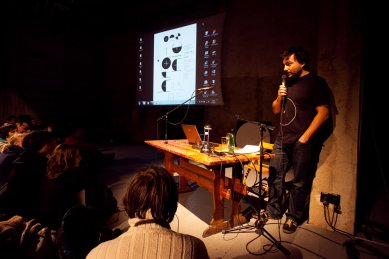
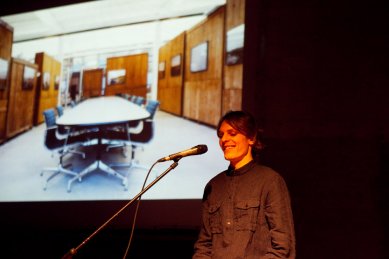
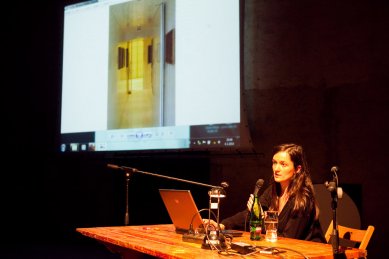
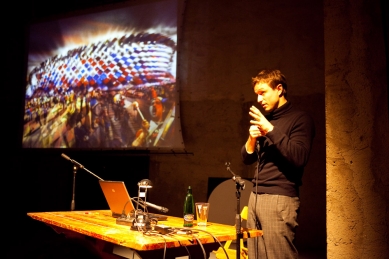
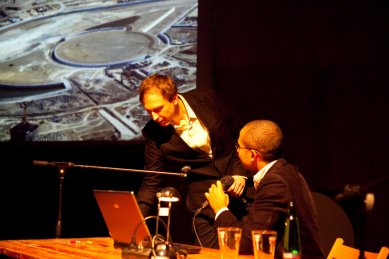
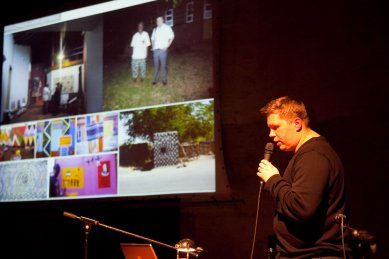
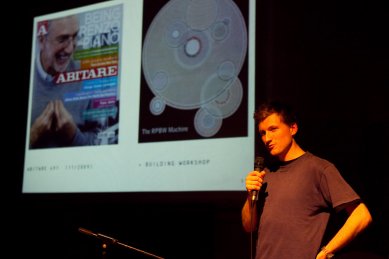

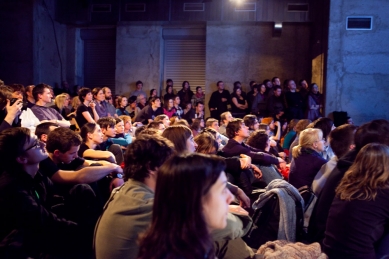
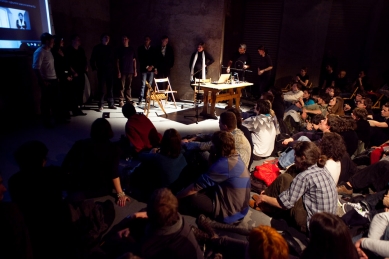
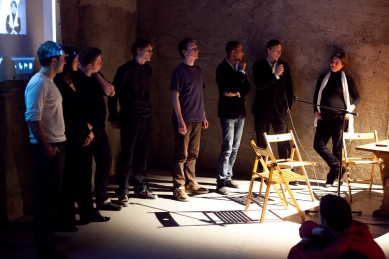
0 comments
add comment
Related articles
0
08.07.2010 | Jasan Burin - insights from the June lecture of the Circle
0
06.05.2010 | Lecture by Ivan Reiman at NoD
0
16.04.2010 | About Bees and Screws - Insights from the April Lecture of the Circle
0
15.03.2010 | Mirko Baum: About Bees and Screws
0
03.03.2010 | kruh 2010 spring: Without Borders
0
17.02.2010 | Spring cycle of lectures and discussions of the Circle "We Abroad"











